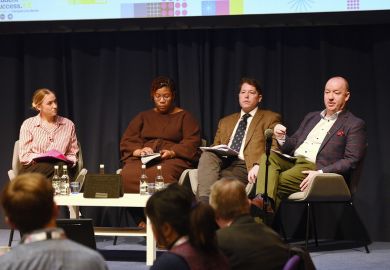In an era of higher tuition fees and ever greater options available, students are becoming more discerning about their choice of university and course. No longer are they simply weighing up campus or city, the merits of work placements or the shape of a syllabus, they are now looking beyond graduation to examine an institution’s employment statistics and record on fostering enterprise.
There’s been a long-standing attitude that "creative courses" provide limited career options, but recent government figures show that young people considering a creative subject can be confident about their prospects. The UK’s creative industries are now generating nearly £9.4 million per hour, or £84.1 billion a year. That’s a growth rate almost twice that of the wider UK economy.
The report by the Department for Culture, Media and Sport reveals the areas of strongest growth between 2013 and 2014: product, graphic and fashion design increased 16.6 per cent, while film, television, video, radio and photography rose nearly 14 per cent. The number of jobs in the creative industries, which includes both creative and support roles, increased by 5.5 per cent in the same time period to 1.8 million.
As an artist, businesswoman and now a vice-chancellor and chief executive, I understand that creativity and commerce aren’t mutually exclusive. And now more than ever it can be said that the creative industries are the place to look for jobs, opportunity and personal and professional growth.
There needs to be investment and innovation in higher education to ensure that this booming industry is sustained by an inspired, talented and highly qualified workforce. The links between university education and graduate employment have been brought into sharper focus since the introduction of higher fees in 2012. The recent Green Paper proposals take things even further, by enshrining graduate employment metrics as a fundamental component of the proposed teaching excellence framework.
Universities should be offering students more dynamic and industry-facing courses that equip them with everything they need to land great jobs with even greater prospects in a sector that’s thriving.
The bedrock of this offering to creative students has to be strong relationships between higher education providers, industry and the market.
Such collaboration and cooperation can result in university course portfolios that are aligned with industry need. By using workforce data, industry statistics and by talking to industry partners, universities can shape their courses to provide students with the knowledge and proficiencies needed in high-growth, high-value industries. Such joined-up thinking can ensure that skills gaps are plugged and graduates acquire the specific skill sets that mean they can move straight into relevant, rewarding roles.
Of course, not all desirable skills are technical; this month’s report from the UK Commission for Employment and Skills showed that employers are concerned about a lack of basic people and personal skills that are essential in the workplace. Nearly 60 per cent of establishments reported that their staff lack the basic ability to manage their own time and prioritise tasks.
Students can and should be gaining work experience before graduation; in fact, it’s essential to develop crucial workplace skills and business acumen.
University partnerships with businesses create priceless opportunities for work placements, however there are other ways of gaining real-life experience such as the Team Academy model, where students build businesses from day one. They are dealing with real-life business scenarios and are mentored by industry experts. At Falmouth University, our pilot “Launchpad” programme attracted graduates that built companies to market needs.
Universities can also be teaching business skills across all their courses, embedding entrepreneurial skills across all disciplines from fine art to computer game design. In the creative media industries, some 30 per cent of workers are freelance and a large proportion of the sector is made up of small businesses. In the creative sector, many opportunities are not with big employers, therefore it’s important that students have an understanding of the financial and organisational fundamentals of business, so that they are equipped to apply their creativity to the demands of industry.
Across the globe, “Brand GB” is in demand; valued and trusted for quality, originality and ingenuity. Exports of services from the creative industries accounted for 8.7 per cent of total exports of services for the UK in 2013 and this number looks set to grow. From James Bond to James Dyson, Game of Thrones to Bridget Jones, the UK creative industries are a success story and higher education has a huge part to play in their continued growth.
Anne Carlisle is vice-chancellor and chief executive of Falmouth University.
Register to continue
Why register?
- Registration is free and only takes a moment
- Once registered, you can read 3 articles a month
- Sign up for our newsletter
Subscribe
Or subscribe for unlimited access to:
- Unlimited access to news, views, insights & reviews
- Digital editions
- Digital access to THE’s university and college rankings analysis
Already registered or a current subscriber?






